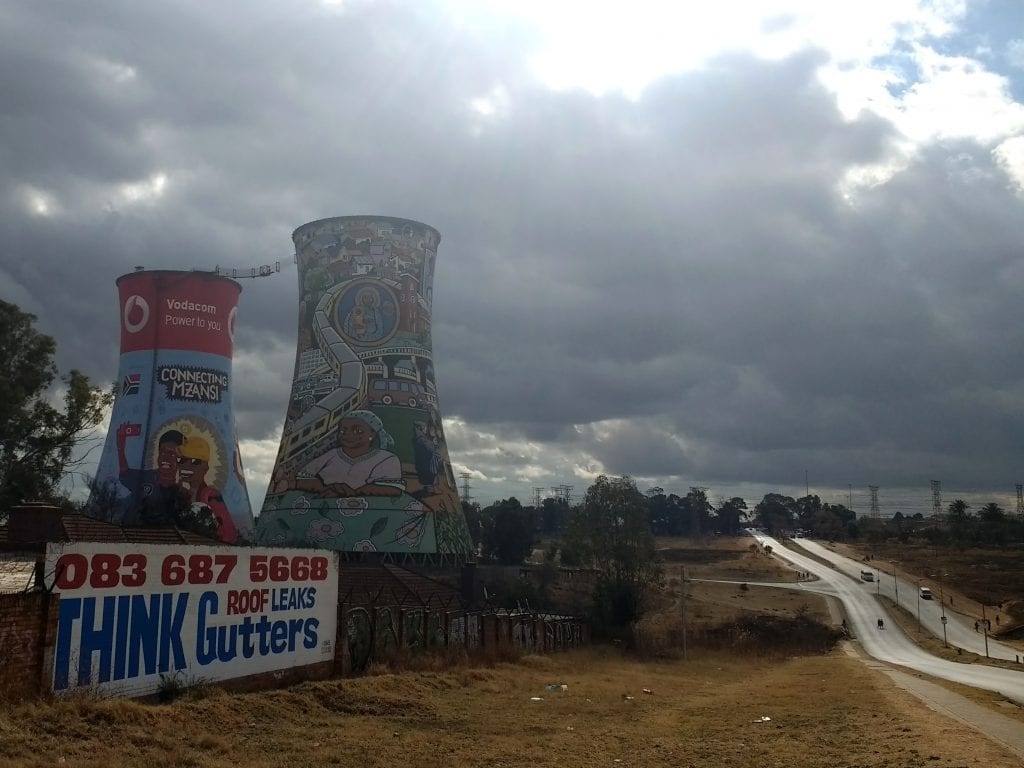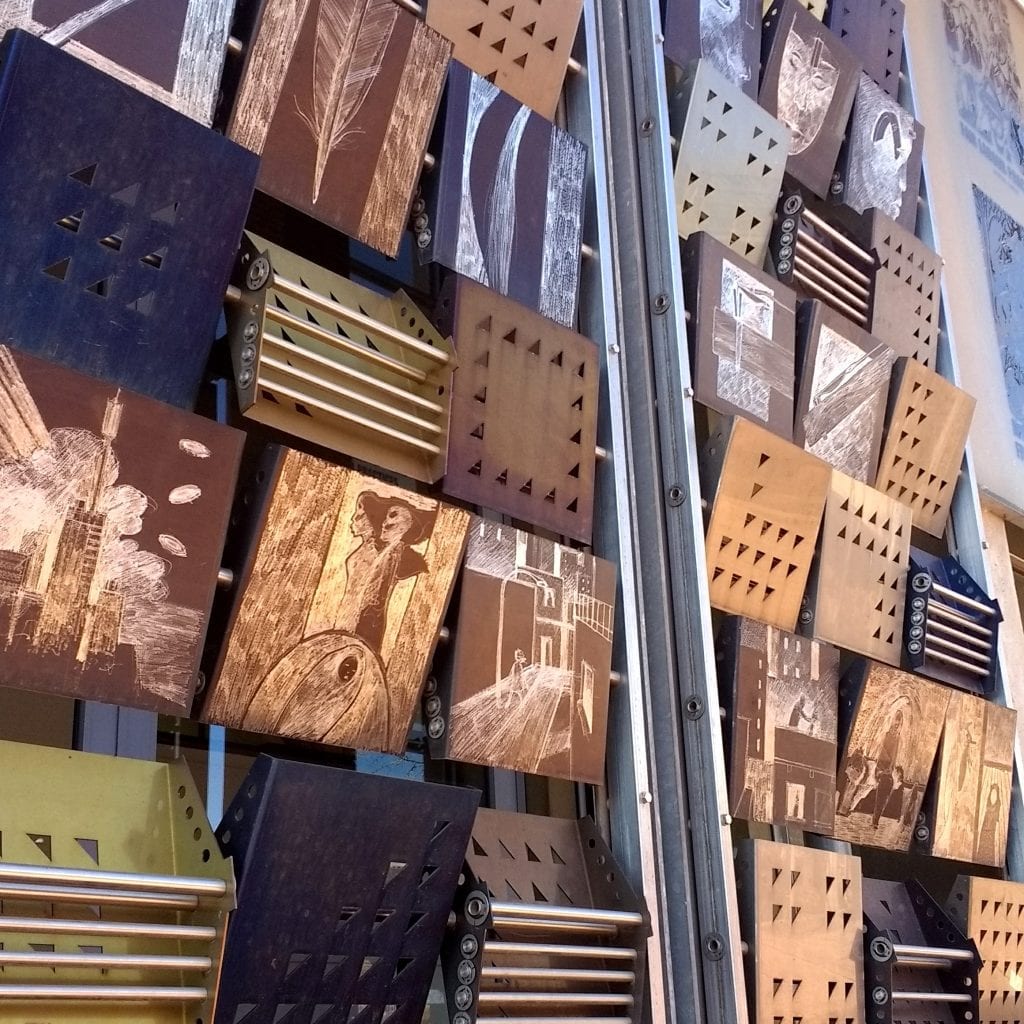The first thing I was told about Johannesburg was how dangerous it is. It started with my family at home, and progressed to fellow travellers I met in Zimbabwe and Botswana. My roommate in Victoria Falls told me he never left the hostel during his time in Joburg, because he was so terrified of being mugged.
I was accordingly a bit nervous when I arrived in Johannesburg. And the first few minutes in the city seemed to confirm all fears: I arrived by bus at Park Station in the city centre. I had not made it half-way to the station exit when a white guy – seemingly the only other white person in the whole station – approached me and asked what a person like me is doing in a place like this. He freaked me out a lot more than anyone else at that moment, so I mumbled something about meeting friends and got away as fast as I could. No need to specify that I wasn’t meeting those friends until evening, and I had to make my way to the hostel all on my own first.
My accommodation was in Braamfontein, the university area in the city centre. It was only a few minutes walk from the bus station. As I wasn’t quite sure about public transport options yet, I decided to walk. I made it to the hostel without incident, and I have later walked this short distance on my own again to join city walking tours starting at Park Station. I also spent some time walking around Braamfontein on foot. It’s an artsy quarter with many galleries and street art, plus some good restaurants and weekend markets. However, I know about at least one incident of fellow travellers being mugged while I stayed there, so the risk is real.
Because hostels generally advise against going out alone, especially in the dark, they organize a lot of community activities to enable their guests to see Johannesburg at the smallest risk possible. I made use of this as much as possible.
When doing something independent of the hostel I either went with friends, who always picked me up and brought me back to my door, or used some kind of organized tourist activity that would prevent me from having to face Johannesburg’s streets on my own. This certainly was a change to my normal travel style. I usually love exploring new cities on foot all by myself. But safety comes first, so I resigned to doing things a bit more differently while in Joburg.
I spent one day on the Sightseeing Bus, those red hop-on hop-off double buses you find in most major cities. You can include a Soweto tour in this, and of course I took the chance to see the township that raised two Nobel Price winners, Nelson Mandela and Archbishop Desmond Tutu. The Soweto tour takes you past the different areas of the township, from the poorest slums to the middle-class homes. It stops at the street that housed both its famous residents, and you have the option to stay for an hour and visit the Nelson Mandela House. Another stop is at the Hector Pietersen Museum and Memorial. It commemorates the victims of the 1976 student uprising that brought Soweto to tragic fame.
Back in central Johannesburg the transfer point from the Soweto to the city tour is at the Gold Reef Casino. It strangely illuminates the extreme contrast between rich and poor that still characterizes the city today. Having just driven past the slums, you are now faced by the extravagance and luxury of a five-star casino and entertainment complex.
This dichotomy between rich and poor, the haves and the have-nots, accompanies you through all of Johannesburg. There are fancy shopping centres full of designer stores on the one hand which often form the centre of life for the more affluent population, as they are guarded and safe. On the other hand, there are makeshift street markets clinging to decayed buildings and poor beggars all around. Johannesburg is the economic hub of South Africa and managed to transform from its gold mining past to the financial centre of the country, but its wealth is not distributed equally. It is this inequality, of course, that produces the high crime rates.
While participating in a walking tour around the CBD our guide explained a lot about how the city tries to improve housing conditions for the poor, to create parks and public areas that are safe, and to generally improve the face of the city. In some areas you can see first inklings of success, but progress is slow.
If you want to learn more about the background behind Johannesburg’s and South Africa’s complicated history, there is no better place than the Apartheid Museum. I have learned about Apartheid in school so I had some idea what to expect, but that doesn’t make the topic any less oppressive. The museum explains the history of Apartheid, from how it came about to how it was finally overcome.
Another historical important place is Constitution Hill. It was the seat of the Old Fort Prison where Nelson Mandela was incarcerated for some time, and it is now a museum and the seat of the Constitutional Court. The prison itself costs money to enter, but you can have a look around the outside and visit the foyer of the Constitutional Court for free.
Thus, a lot of the attractions of Johannesburg have some relevance to its past and its history. Which makes sense, because without at least an inkling of its history it’s difficult to understand the many contrasts of this city. It’s not only exterior opposites, like seeing abandoned buildings next to fancy shopping malls, of fenced-in residential areas on one side of the city and slums on the other. It also contrasts that go deeper. The high crime rate on the one hand, and the friendliness of the locals on the other. The wary feeling when you hear the warnings about crime, and they wish to explore more of this fascinating city. In the end, both are an integral part of your unique Johannesburg experience.
Nele Giese is a travel-addict, introvert, and freelance writer from Germany. The attempt to bring all those traits together resulted in her blog globalintrovert.com where she encourages fellow introverts to live their travel dreams.






